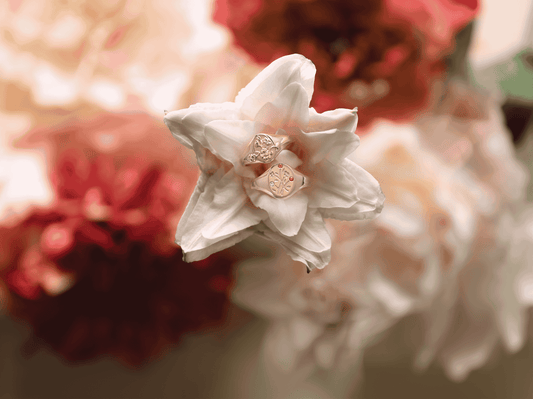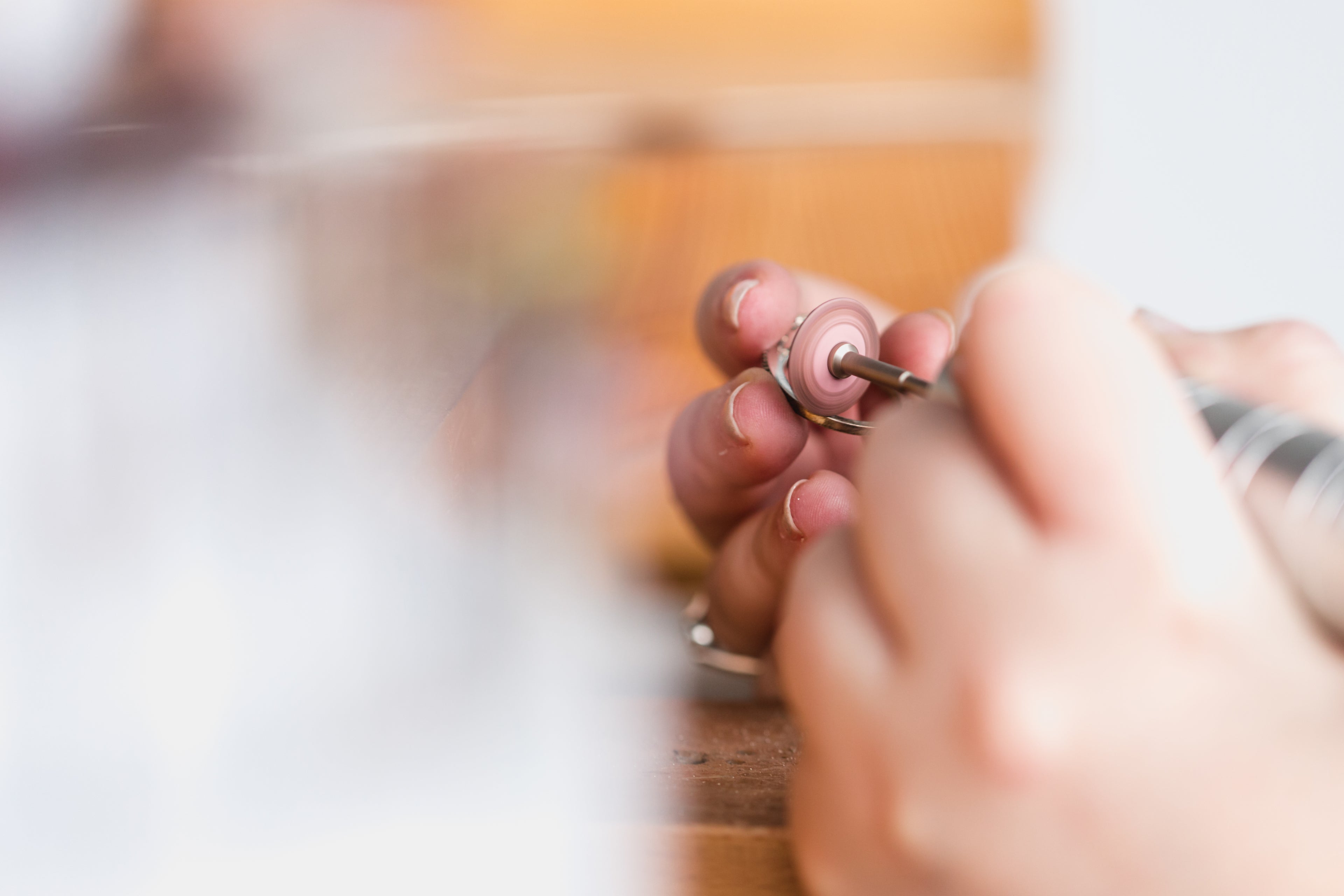A New Way to Do an Old Thing, and Do It Well
Nearly every custom piece I make begins in CAD.
That might surprise people who associate handcraft with tradition, and technology with mass production. But for me, CAD isn’t a shortcut. It’s a sketchbook with dimension, a way to build something with clarity before we ever touch metal.
It lets us take your story and shape it with precision, flexibility, and intention. We can revise. We can experiment. You can see your design take form and say, “Let’s move that stone,” or “What if the gallery curved here instead?”
There’s no guessing. No crossed fingers at the finish line. And even with all that tech up front, the final piece is still finished entirely by hand.
A Collaborative Process, Not a Factory Button
This isn’t jewelry from a vending machine.
Designing in CAD doesn’t remove the artistry, it deepens the conversation. You’re not left in the dark, hoping the vision matches the outcome. You can see every angle in a 3D rendering. Rotate it, zoom in, sit with it until it feels like yours.
Once you approve the design, it becomes a wax, then a cast. From there, it’s all handwork. Every stone is set by a human being with decades of skill. Every surface is polished by hand. Every detail is intentional.
CAD isn’t about automation. It’s about connection. It’s how we speak the same visual language and make sure your piece reflects exactly what you hoped for—or maybe even something better.
Where CAD Shines Brightest
Some pieces want to carry more than sparkle. They hold layered meanings, overlapping timelines, and delicate emotional weight. They might include multiple stones, hidden messages, or unexpected architecture.
This is where CAD excels.
I use it most often when designs involve:
- Symbolic or multi-layered concepts
- Mixed-stone arrangements
- Sculptural galleries or intricate forms
- Pieces that need to be structurally strong for everyday wear
CAD helps ensure the piece will hold both its shape and its sentiment.
When I Recommend Skipping CAD
Sometimes, the simplest answer is the best one.
If you want a classic solitaire or traditional band, there’s no need to reinvent it. In those cases, I’ll guide you toward existing, well-crafted forms that already honor that timeless simplicity.
This lets you put more of your budget toward what matters—maybe a larger center stone or a richer metal. Not everything has to be custom to be deeply meaningful.
When Strength Calls for Forging, Not Casting
Not every design decision is about style. Some are about strength.
If you’re especially hard on your jewelry—or if we’re setting an irreplaceable or heirloom stone—I may recommend hand-forging certain elements, like prongs or structural bands.
Forged metal offers different durability than cast metal. It holds up better under strain, making it a better choice for people who climb, lift, or simply live hard with their hands.
Knowing when to use which method is part of my job. It’s not about old versus new. It’s about what will last.
What I Don’t Do
There are a few things I won’t compromise on.
I don’t cast stones in place. That method is faster, but it weakens the structure and increases the risk of damage over time. I also don’t use automated setters. Machines can’t feel tension, can’t account for nuance, and can’t adjust by instinct.
Every gem in your piece is placed and secured by hand. That takes longer, but it’s worth it.
You’ll feel the difference.
Old Techniques Are Alive in My Studio
My father is a fourth-generation gemcutter. He still cuts each stone by hand, letting the light guide the angle. My metalsmiths use techniques older than electricity. These methods aren’t forgotten here—they’re honored and kept alive.
Tradition isn’t something I left behind. It’s what I build on.
Using CAD doesn’t erase that history. It brings it forward, adds precision to intuition, and allows me to serve more stories with more care.
Let the Dinosaurs Roar, I’m Building a Bridge
I hear the critiques from the old guard. I respect their skill and mastery. I learned from many of them. But I don’t accept the idea that CAD or casting makes my work less real.
This method still requires patience, experience, and sensitivity. It still involves hundreds of small choices that can’t be made by software alone.
There’s room for many ways to make beautiful things. The world doesn’t need smaller circles of who’s “real.” It needs wider bridges—and more honest conversations.
Let’s Design Something That Feels Like It Was Always Yours
Whether we begin with a pixel or a pencil sketch, my goal is always the same:
To create something beautiful, lasting, and deeply yours.
Your life. Your story. Your hands.
Let’s choose the path that fits best.
Book a custom consultation and let’s begin.





